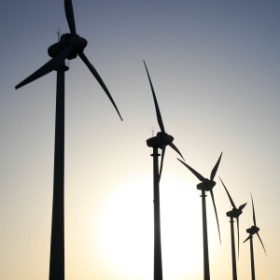
In a bad news week for wind power claims of inefficiency and profligate costs of current wind energy policy have been laid bare, apparently further justifying the government’s anti onshore wind policy.
In the first instance, Professor David Mackay the former Chief Scientific Advisor of DECC has presented evidence that a wind farm would require 700 times more land to produce the same amount of energy as a shale gas fracking site.
In a claim that will be much disputed by the battery of fracking opponents, Mackay claimed that fracking not only uses less land but also on balance creates less “visual intrusion” than a wind farm.
Whilst the findings will undoubtedly prove controversial the methodology used measured each technology’s footprint against 6 defined criteria including:
- Land use
- Height
- Visual impact, and
- Vehicle movements.
Shale gas ‘triumphed’ on three measures, solar farms on two whilst wind power failed to win on any count.
The final, un-awarded measure was vehicle movements for which all were rated equally bad due to each generating “lots” of traffic.
The study found that a site housing 10 fracking wells would require 2 hectares of land and that its 85-foot-high drilling rig would be visible – temporarily for “the first few years of operations” – from 77 hectares distant.
In contrast, a wind farm with the ability to produce the same volume of energy as the notional 2 hectare shale gas site would need to cover an area of 1,450 hectares consisting of 87 328 foot tall turbines which would be visible from between 5,200 and 17,000 hectares away!
That’s quite some contrast.
In conclusion McKay rather than damning and favouring a single solution highlighted that:
“There is no silver bullet – no energy source with all-round small environmental impact … [all] have their costs and risks [so we need to] look at all the options”.
Ken Cronin, Chief Executive of the trade body representing fracking businesses, UK Onshore Operators Group, welcomed the findings saying:
“David MacKay’s review is a useful addition to the debate. We are going to need all these energy sources to be part of a balanced energy mix.
However Dr Jimmy Aldridge, an Energy Analyst for Greenpeace UK, said:
“The visual impact of fracking isn’t really the main issue.
“Everyone knows that wind turbines are taller than drilling rigs, so you can see them from further away, but government figures show three times as many people support wind power than shale gas, and that difference just gets more pronounced when it’s in their local area.
“That’s partly because of the risk of localised air and water pollution, partly noise and inconvenience, but most importantly, because shale gas is a high-carbon energy source, which is exactly what we need a lot less of.”
Whether “everyone” really does “know” and indeed whether the stated localised pollution concerns are indeed a factor in public opinion is a moot point however Aldridge is right to highlight the potential mismatch between visual and physical impacts. Clearly a blot on the landscape pales in insignificance against the perceived risk of pollution and earth tremors.
Following on from Mackay’s report it has been found that 10 pre-existing wind farms in the UK have each been paid in excess of £3m since 2011 to not operate their turbines, with one, the Whitelee wind farm in Scotland, receiving a barely credible £11m.
While there is no illegality in these payments it does lay bare the perverse incentives on offer in the energy industry and further undermines the subsidised business case for wind farm development.
In effect wind farm owners are paid to switch off their turbines to prevent over capacity being fed into the grid, these payments can exceed the market value of energy two fold.
These ‘constraint’ payments are managed by National Grid and are paid in response to the bidded sum each wind farm owner makes for each MWH of energy they would have produced had the turbines been operating. National Grid then asses whether this cost is reasonable and either grant or deny it.
Since 2011 £70m of these capacity payments have been made in total.
Ofgem who gained control of the ‘incentives’ in 2012 has promised to reduced the level of capacity payments and claims to have prevented firms getting an “excessive benefit” from the payments, by reducing the prices paid from an average of £197 per MWh to £83 per MWh. This level however is still significantly above the prevailing wholesale market price for electricity and therefore the price they could have expected to receive from the energy they actually produced. Perverse incentive indeed.
Dr Lee Moroney, research director of the Renewable Energy Foundation think tank that produced the analysis, said:
“It is now becoming crystal clear that the full cost of constraints is disturbingly high. A more robust position from both government and the regulator, Ofgem, would go a long way to reining in wind power’s very high constraint prices.”
National Grid defended the payments saying:
“For the moment, constraint payments are the most economically efficient way to balance the system while we await improvements to the electricity network such as the Western Link — a £1 billion sub-sea link that will bring renewable energy from Scotland to the rest of the UK.”
As Dr Mackay said in his report it is clear that all the potential solutions to our future energy security have their costs and risks, not least wind power.
